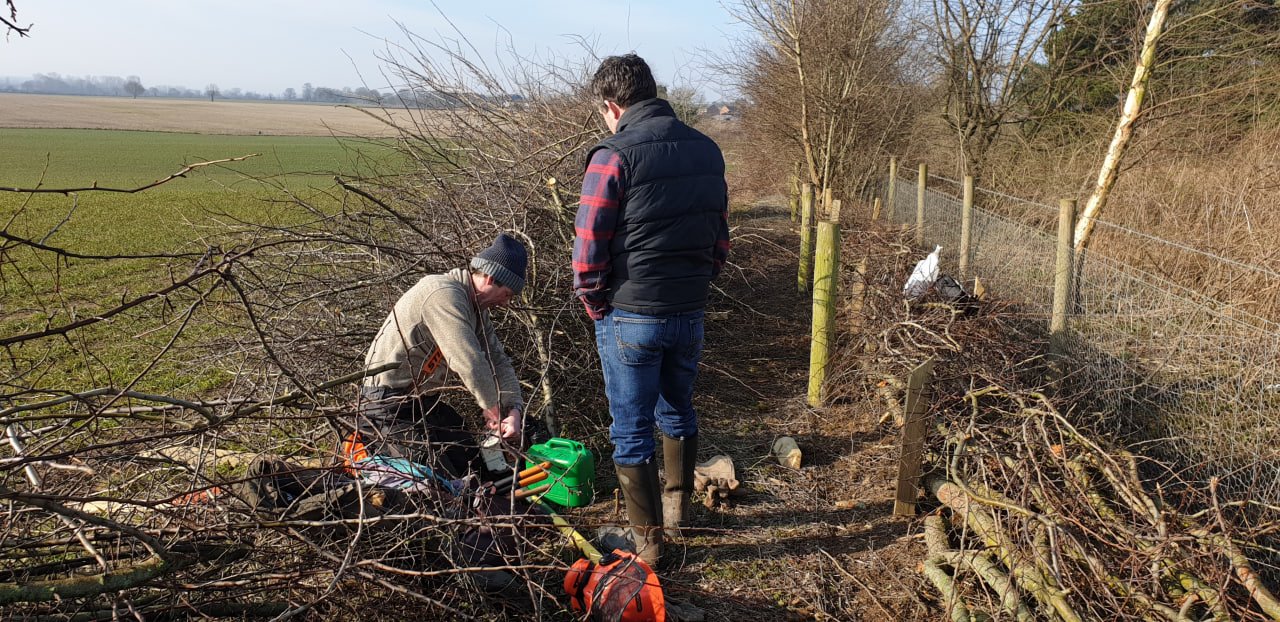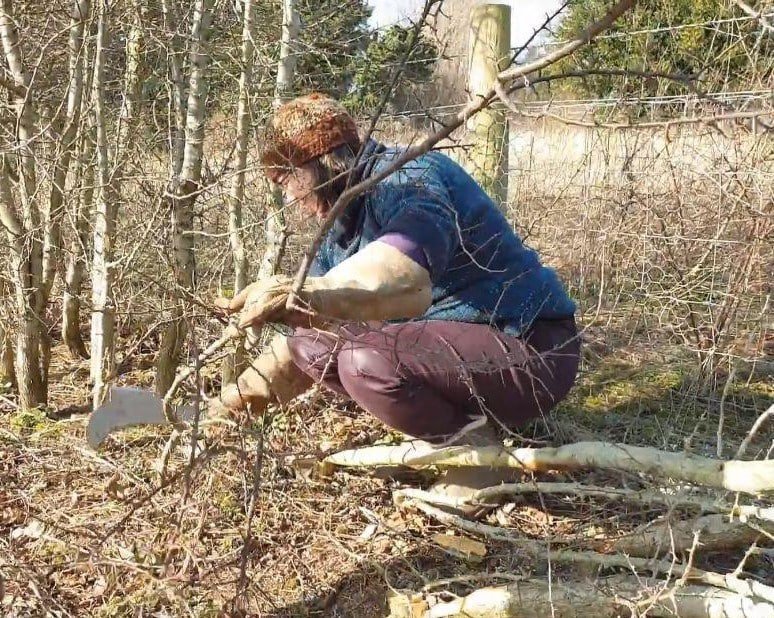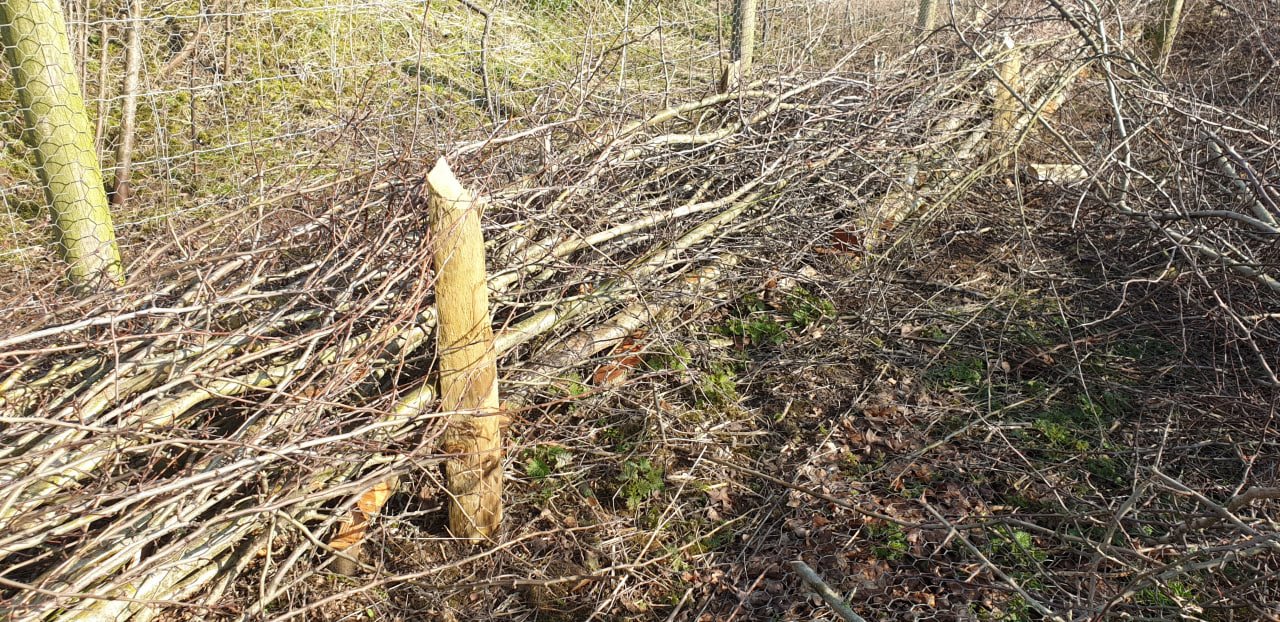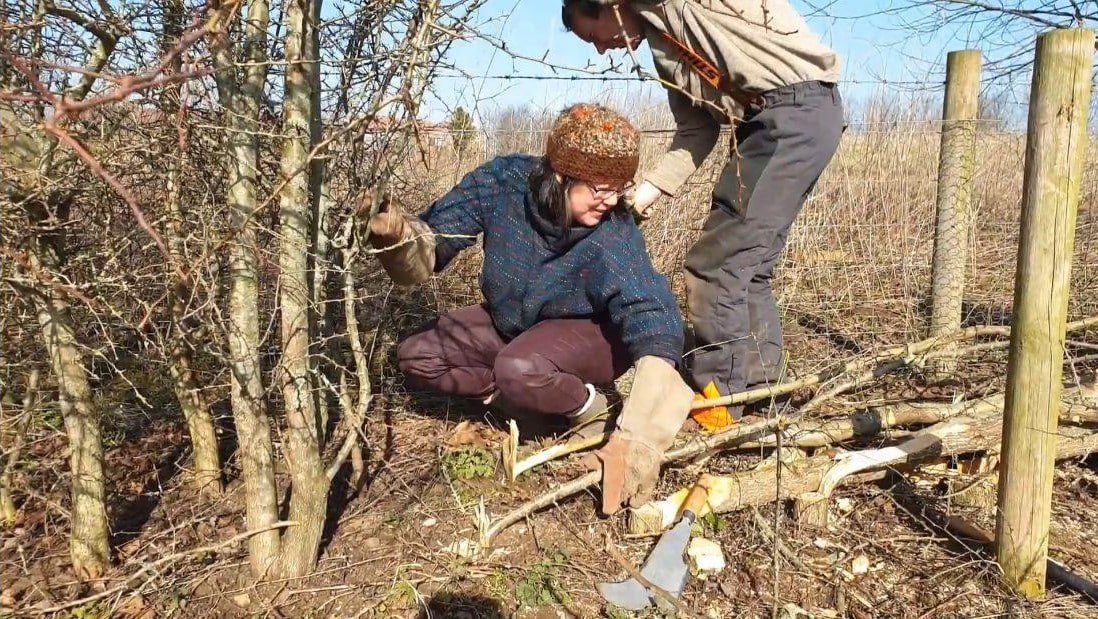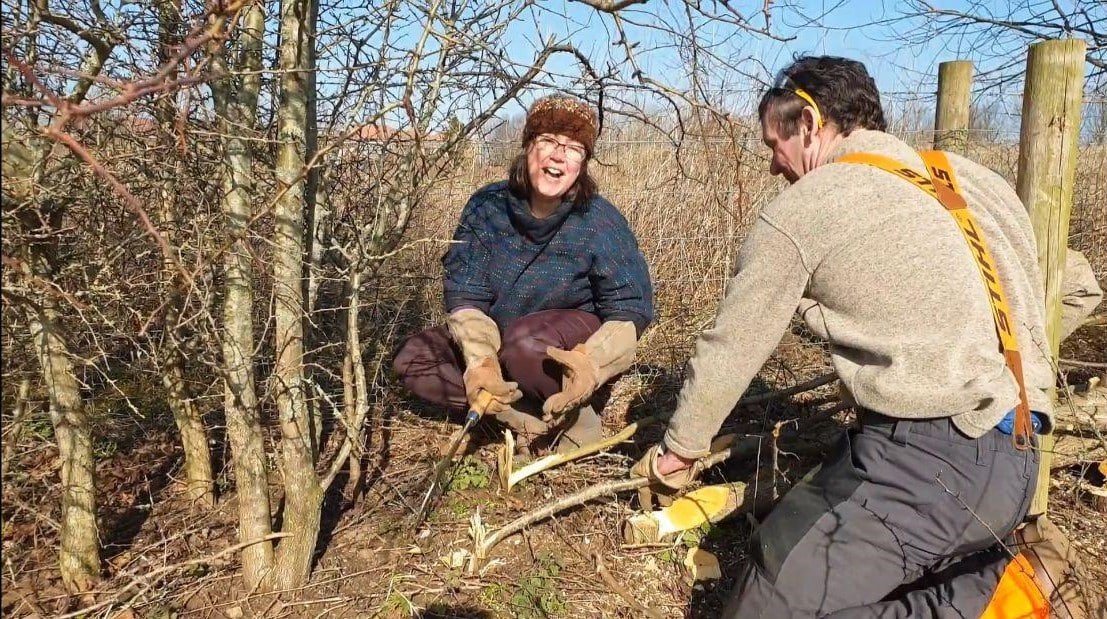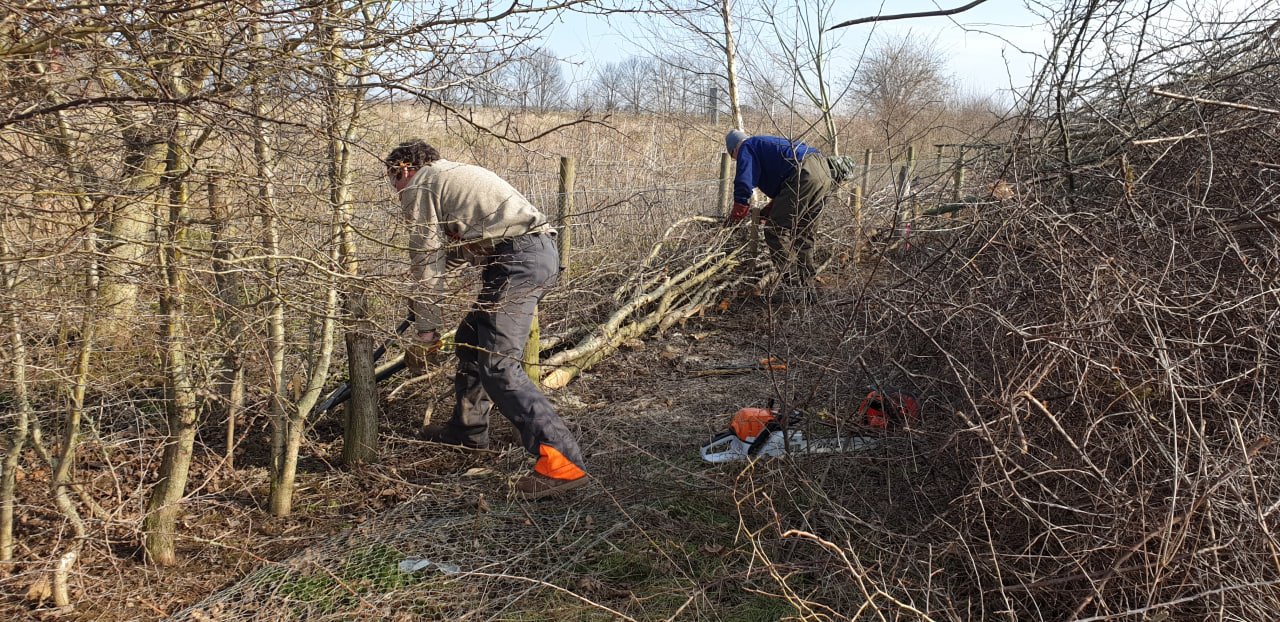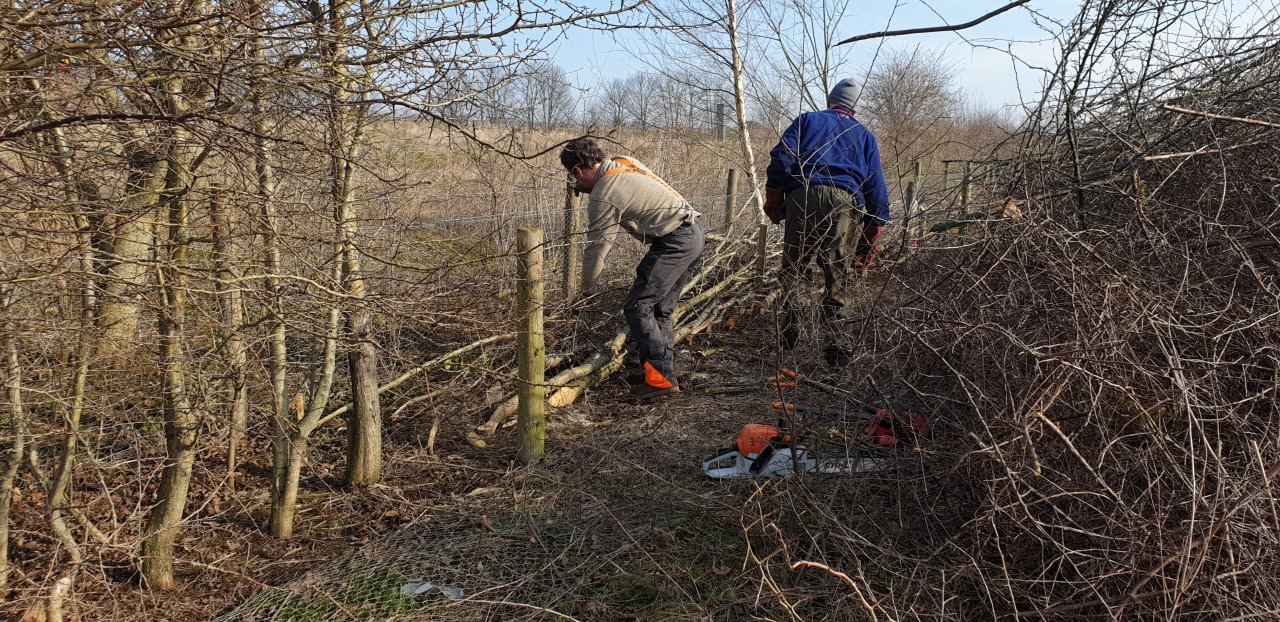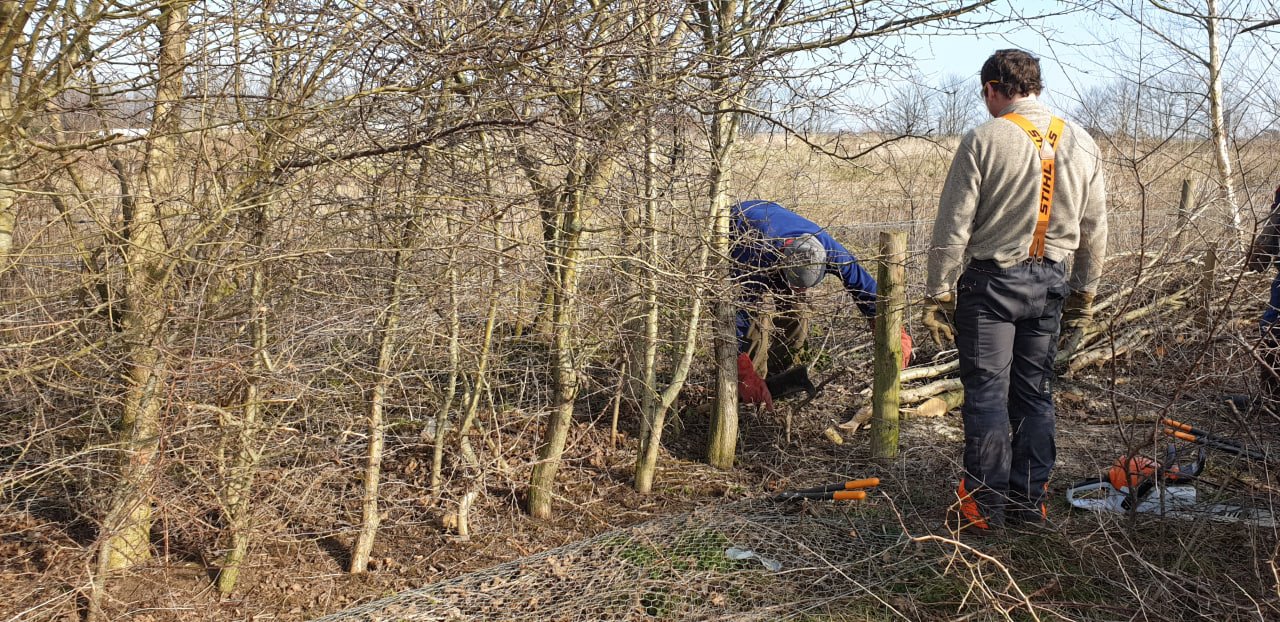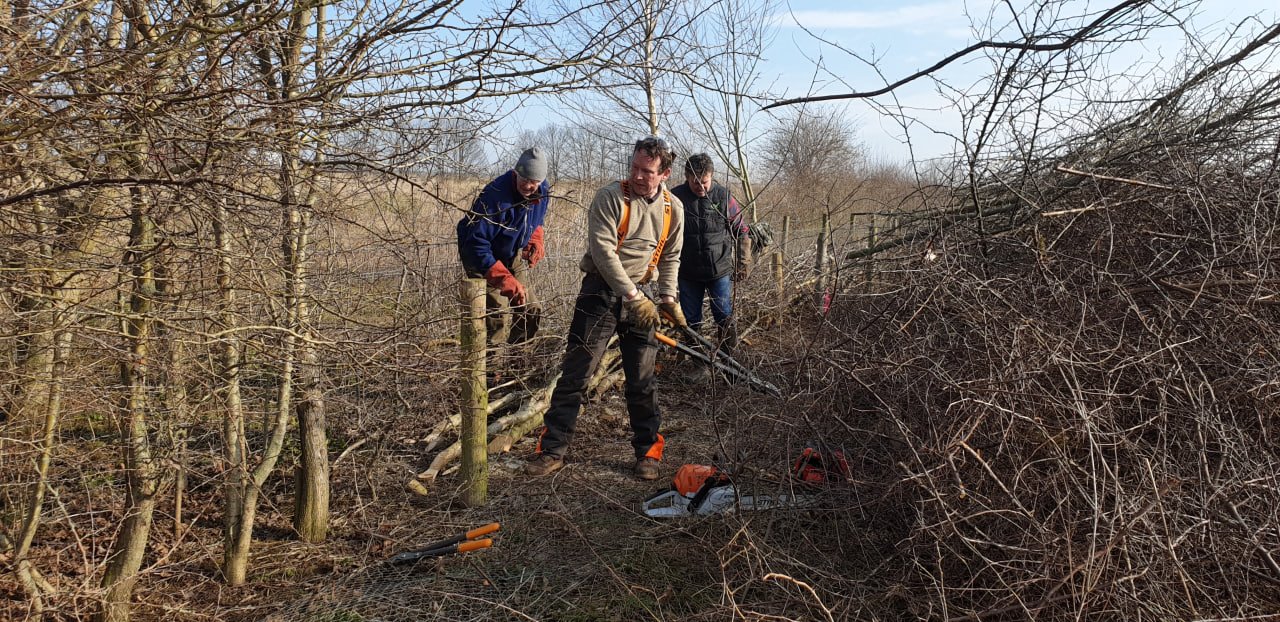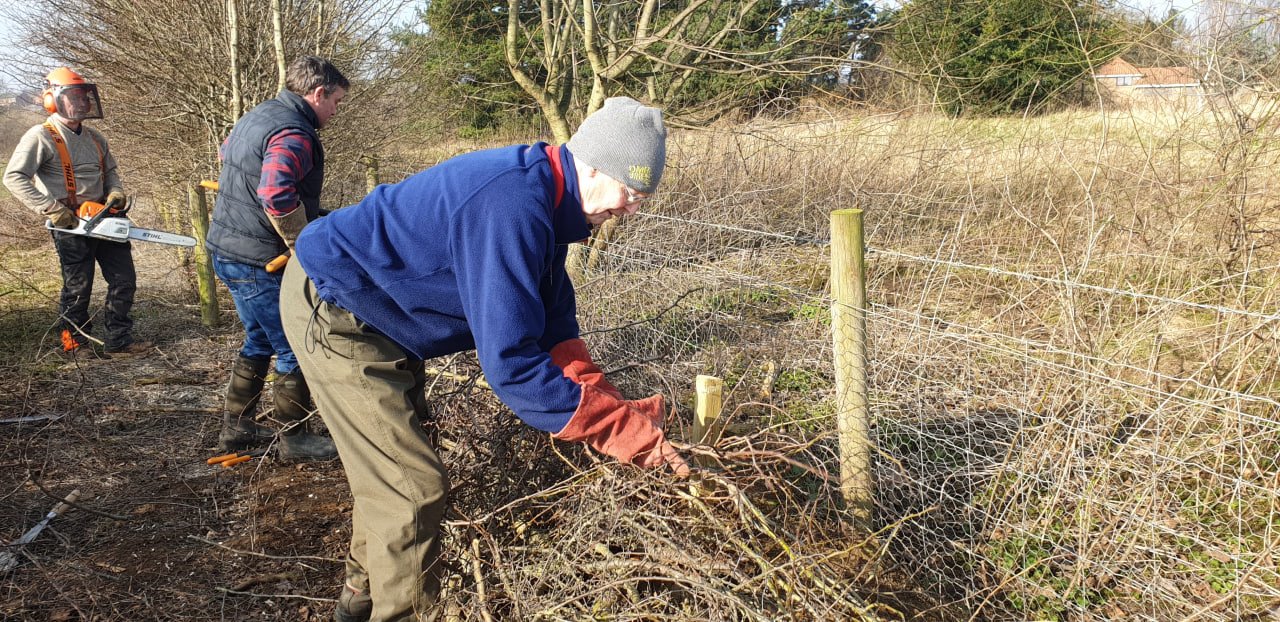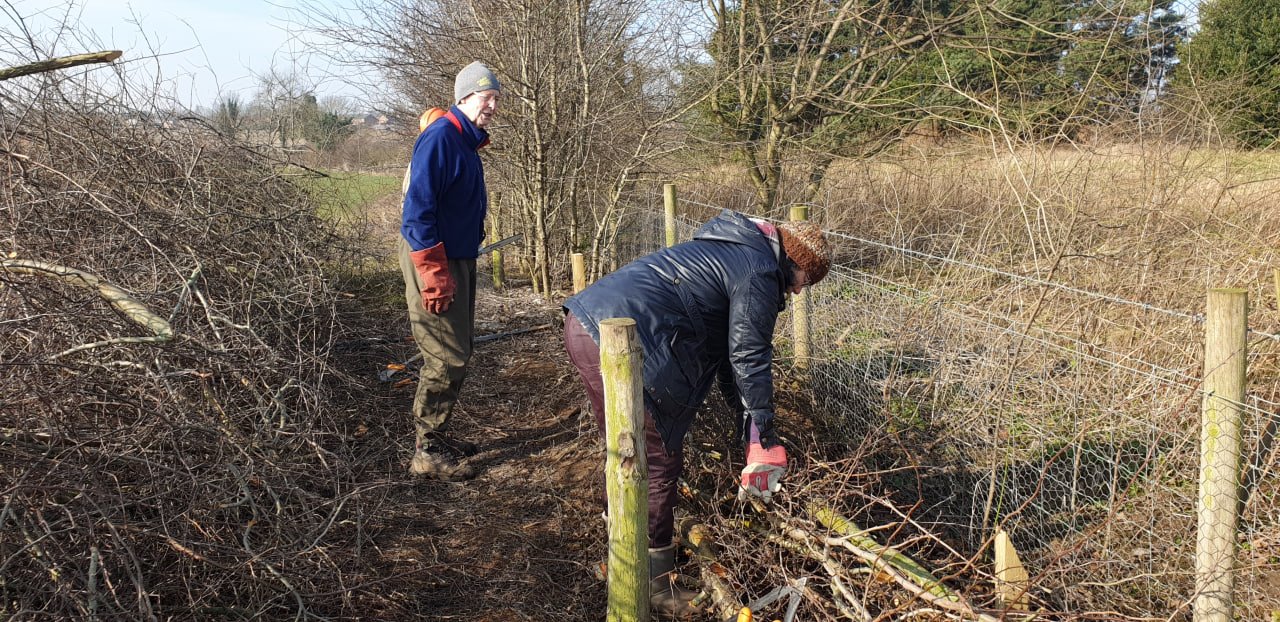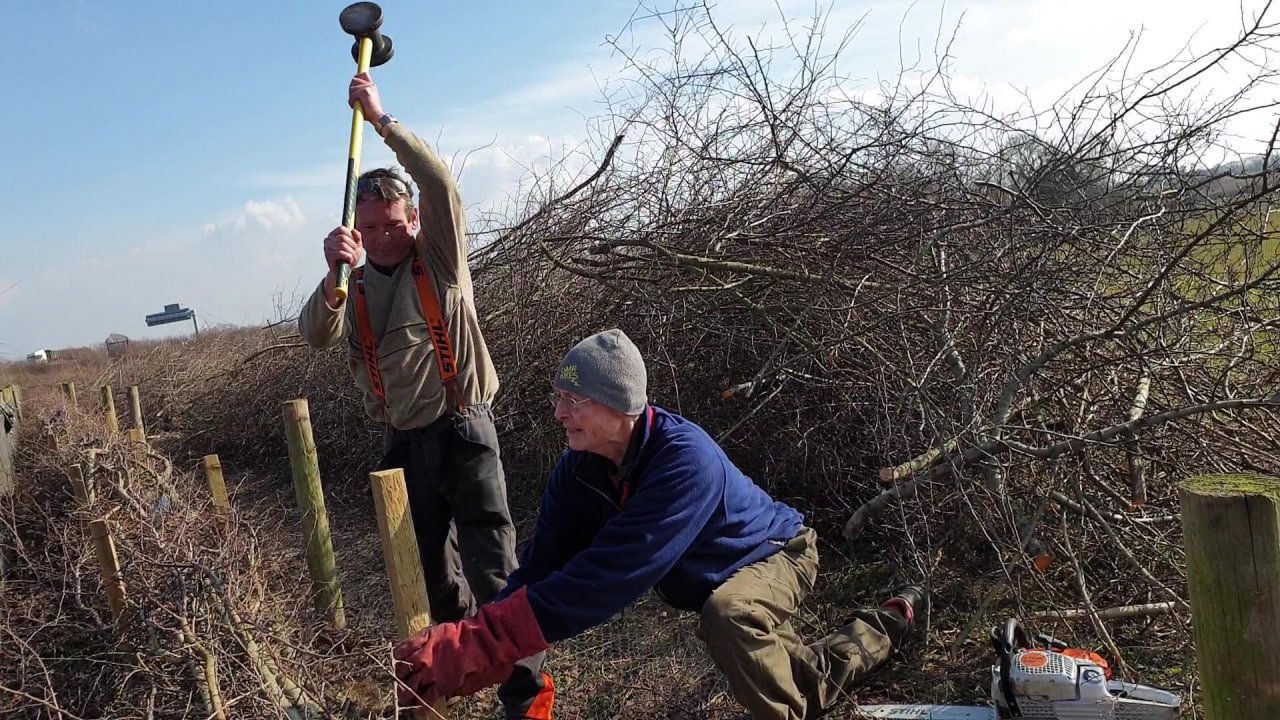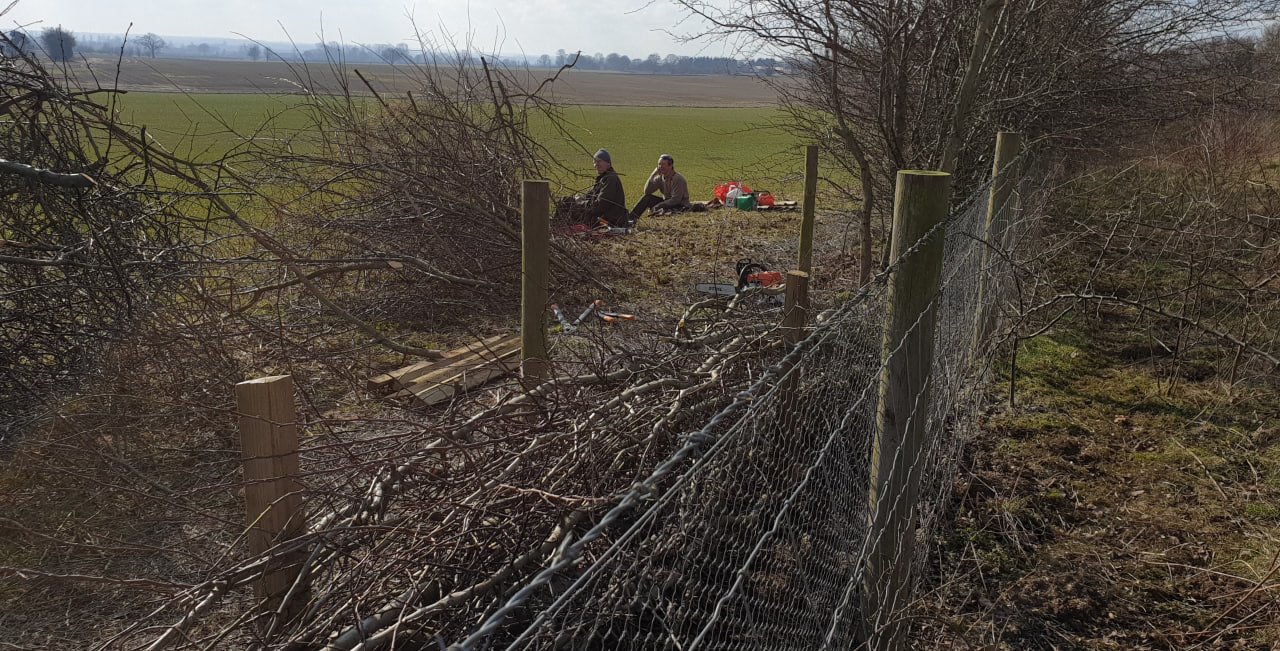Hedge Laying, 5th May, 2020
Hedge laying trip
It was the Great Hedge Laying Trip last Thursday. I’d taken myself and husband Neil, cameraman, up to Richmond overnight. We had no idea where we were as we’d just followed Stephen in our car to somewhere near Bedale in North Yorkshire the next morning. Me and Stephen have known each other since we were born, our mums are childhood friends. We arrived on the edge of a farm where the hedge that they’d laid already stretched off into the distance and fighter jets were flying around from RAF Leaming, so it was quite noisy. I did have a go at this years ago but I couldn’t remember what to do, but was eager to have another go.
He had told me this hedgerow was planted about 10 years ago with hedge laying in mind (the farmer he works for is a top man! I hope to meet him one day, he sounds very conscientious and a forward planner regarding conservation, I’d love to interview him and see what I can learn) so now is the time to actually lay the hedge…and all the trees are mainly Hawthorn, Blackthorn a bit of Gelder Rose, a bit of Dog Rose, Holly and Field Maple.
Stephen’s background is a degree in countryside management and conservation work. He works for conservation charities and is now self-employed doing hedge laying in the winter and working for a nature reserve. This job came about from the landowner in Well who knew he did hedge laying and needed hedge laying all over his land.
“Loads of it.” As Stephen put it “He’s passionate about his hedgerows.”
“Let’s talk about tools. What have we got?” I asked.
“There’s two types of billhooks here, there’s loads available, regional styles. This is a Yorkshire billhook, which is probably the biggest, well it is the biggest one. And that’s a Stafford Pattern. And they’re principally the tools. A pair of loppers, it makes it easier. Obviously chain saw for the bigger stuff.”
He’d bought his billhooks from the Vintage Tool Shop. The idea with a billhook is that you just cut so far through the tree, enough that it’s pliable enough to bend over without snapping, but not too much that you lose the tree. (What is a billhook?)
Photo of me using a billhook. Notice the cut, in this case, is on the right of the trunk as it will be laid down to my left. Enough of the trunk is left attached so it doesn’t snap, which needs really careful attention, otherwise the trunk is completely cut through rendering it unable to be incorporated into the hedge. The tree may not die, depending on the species, but would take years to grow to a suitable height for the hedge.
He went on to explain that billhooks are used for the laying. In years gone by, people would have used axes but nowadays they use a chainsaw to speed things up because people have to make a living out of it. Centuries ago, all the agricultural labourers would have worked together on it. Most hedges were planted, and dry stone walls, in the 1600’s mainly, because that was the main ‘Inclosure Act’ of 1773 was passed in this country, where all the land was divided up and farming methods changed. It is still in act today.
“Do they have original hedgerows still growing around? Have you ever come across any really ancient ones?” I asked.
And I was really pleased as he said “Yes, I’ve laid one up in Well which was, well they don’t know exactly how old it is but it’s generations and generations, so it’s hundreds of years old.” And that “it’s been laid before obviously, and by laying a hedge, you’re promoting the length of its life because of the regrowth.”
Interested to know about what management has to be done once a hedge has been laid, as I assumed it would be just like trimming off the tops and the sides he said
“You can let it grow back up and re-lay it, or if, because it’s quite expensive to lay them, you generally let them grow up, keep trimming them and they just get denser and denser until eventually there will come a point where you will need to let it grow up and re-lay it again. The whole point of laying it is that if you don’t lay them, this is a newly planted hedge about 10, 12 years ago, if you don’t lay them and just keep trimming them, they just get gappy at the bottom. And the whole idea is that it’s stockproof. And if it’s all gappy at the bottom livestock can get underneath it.”
So what livestock, sheep, or just any?
Photo: Me carrying the stakes.
“Sheep, cows. You’ve got various regional styles of hedge laying depending on what stock you have. This is laid in a Yorkshire style, but it’s actually staked in a Lancashire style (laughing) the purists wouldn’t like it, but originally the Yorkshire style would have had stakes down the middle with a top rail fastened on because it’s laid so low, it’s laid much lower than other hedges. Most people think of the Midland Bullock Hedge which is more at 45 degree angle and it’s got the woven hazel on the top as binders, whereas the Yorkshire one just had a rail on. Each region developed different styles depending on what they had. In Yorkshire it was uplands, so there was coppices, no abundance of hazel and stuff to coppice, to weave for binding, so they used to put a rail on, just so it was stock proof for the first season.”
He said it’s just nailed on top of the posts and it doesn’t look very pretty, but it’s not necessary on his hedges, so there’s no point doing it. If you were in a competition you would have to do it because that’s the style but his hedge doesn’t need it because it’s fenced in and next to an arable field, so it doesn’t need to be stock proofed.
Once this hedge has been laid, it will just keep growing forever as long as somebody manages it. They’ll let it grow up to the height they want and then they’ll keep trimming it and it will just get denser and denser and then eventually, probably in 20 years maybe, maybe longer, they’ll let it grow up a bit more and then they’ll re-lay it again.
The thorns of the blackthorn are lethal, I’ve had them in me a few times. They’ve got some bacteria that lives on it’s tips, so when you get the blackthorn in you, it hurts, it swells, and some people get infection from it. So gloves! Always wear your gloves!
Then it was time for me watch Stephen demonstrate how to do it and then for me to have a go. For my first attempt, I was chipping away, using far too many cuts to lay one, which amused the onlookers and Stephen said try not to put my billhook in the soil which made us all laugh! Then I got stuck on the fence so Stephen had to free me. For my next attempt I made 1 cut to the next tree which was sufficient enough to lay it, getting my street cred back!
Everyone joined in laying some hedge and Stephen was preparing the trees for laying with the chain saw, to which my husband said ‘There’s no stopping him now, he’s off, it’s what he was like driving this morning when we were to keep up!
Bob, who has worked with Stephen for years had joined us at this point. He said “It’s fantastic how it comes again, isn’t it?”
Hedges are laid uphill so the sap can rise. If you lay a tree downhill you’ve got to bend the trunk more so there’s more danger of snapping it. Essentially, it’s like coppicing as the regrowth comes from the base of each stem or the tree trunk, (some regions call hedge laying ‘Pleaching’) and you get regrowth along the stems as well. These are all living because you’ve preserved enough sapwood and bark so they will regrow, but eventually the trunk you have laid will die, but by the time they’ve died, you’ve got all the regrowth from the base.
My gloves were too big, and kept falling off. I spent time pushing down the branches to keep the laid hedge low and yes, I got black-thorned straight through my glove, straight into my knuckle, but I laughed it off as it is all part of the process!
All in all, we had a fantastic day which I will always remember, thank you Stephen!
Photo - ‘I’ve been black-thorned! It really hurts!’
